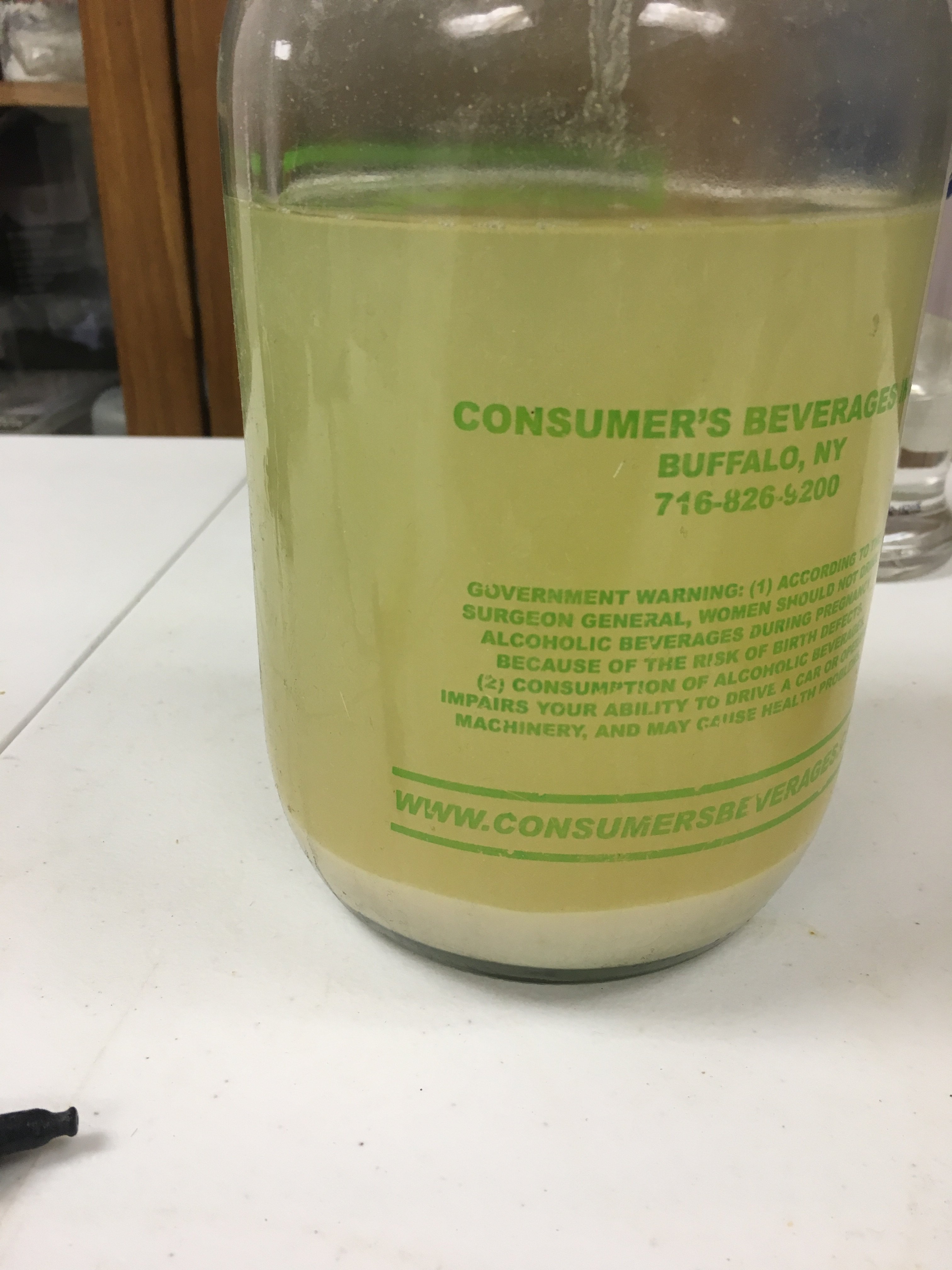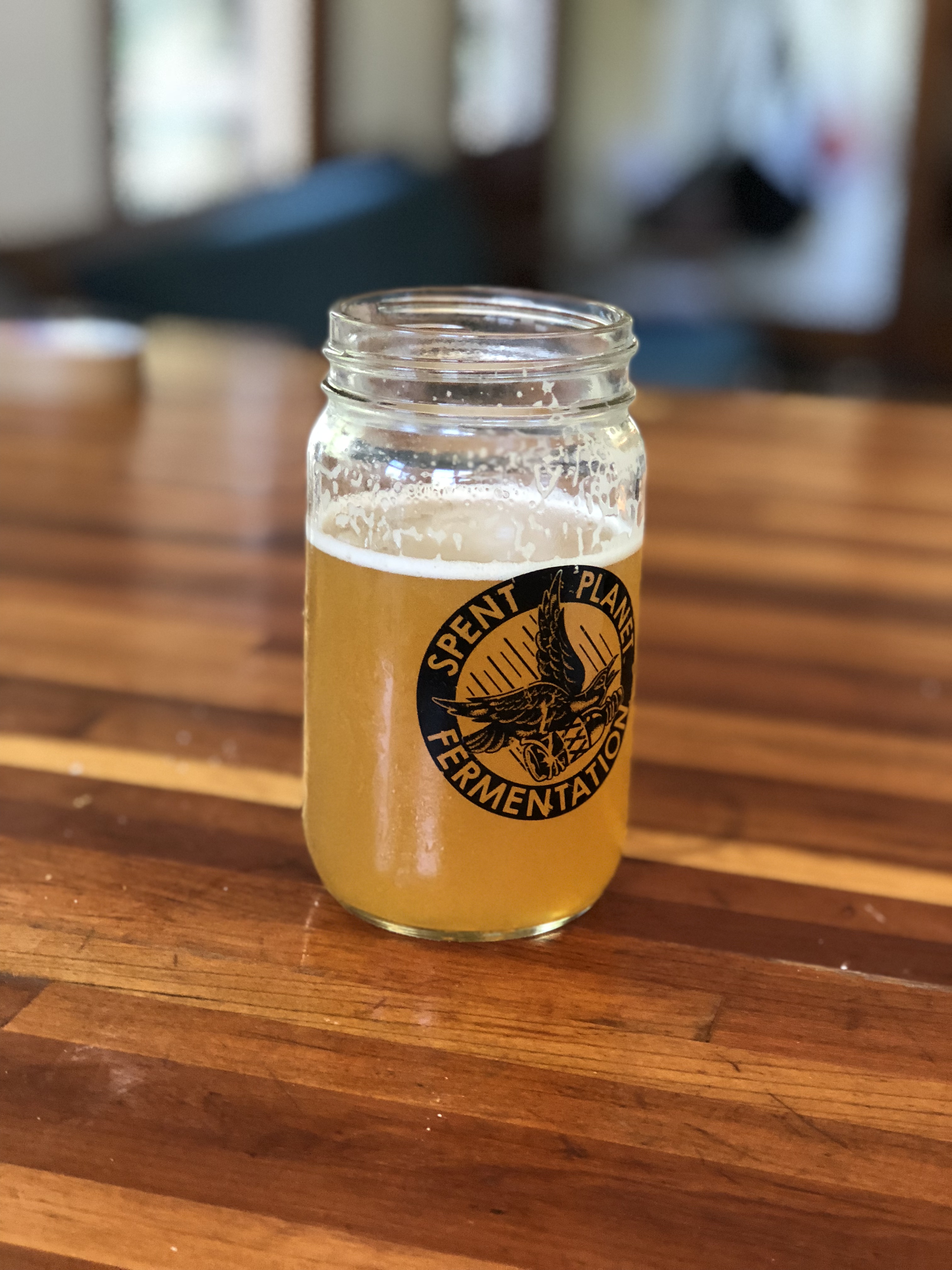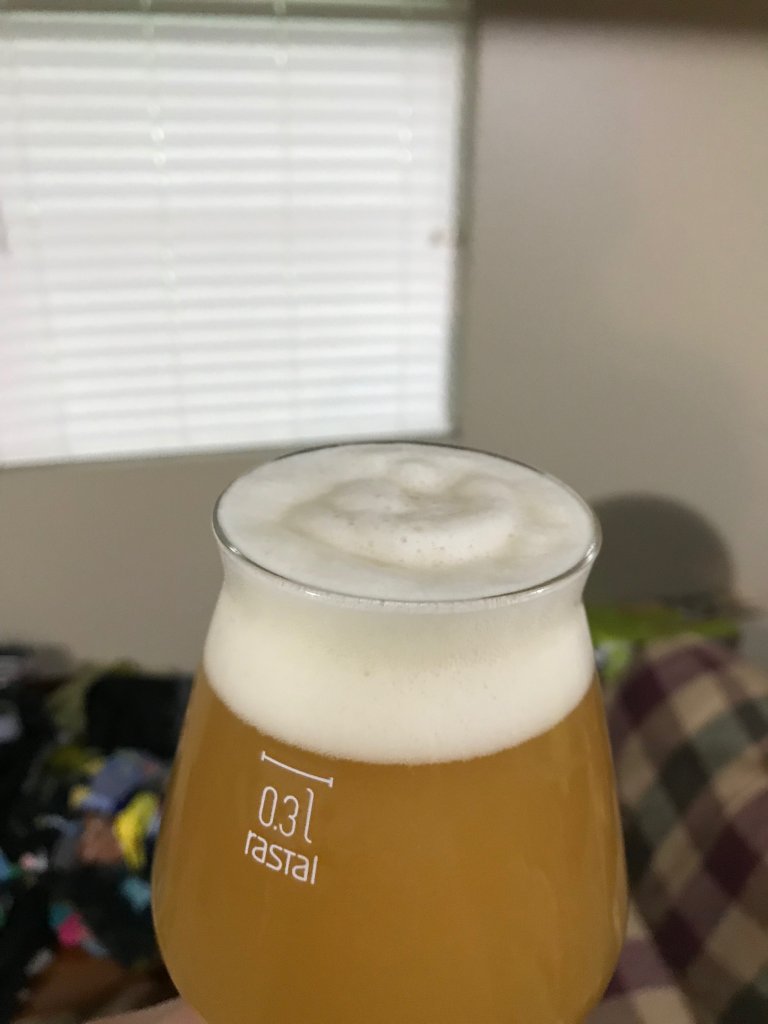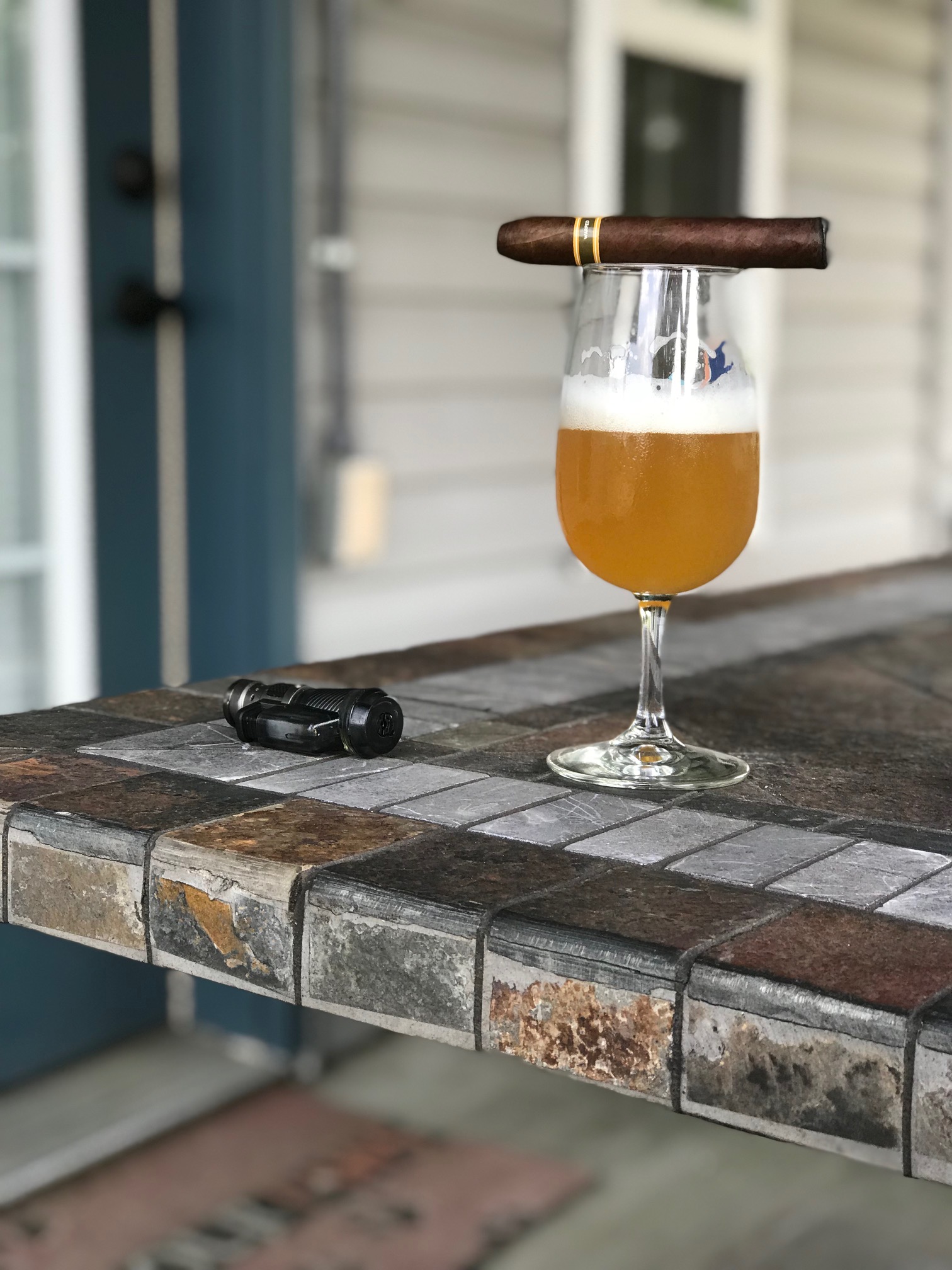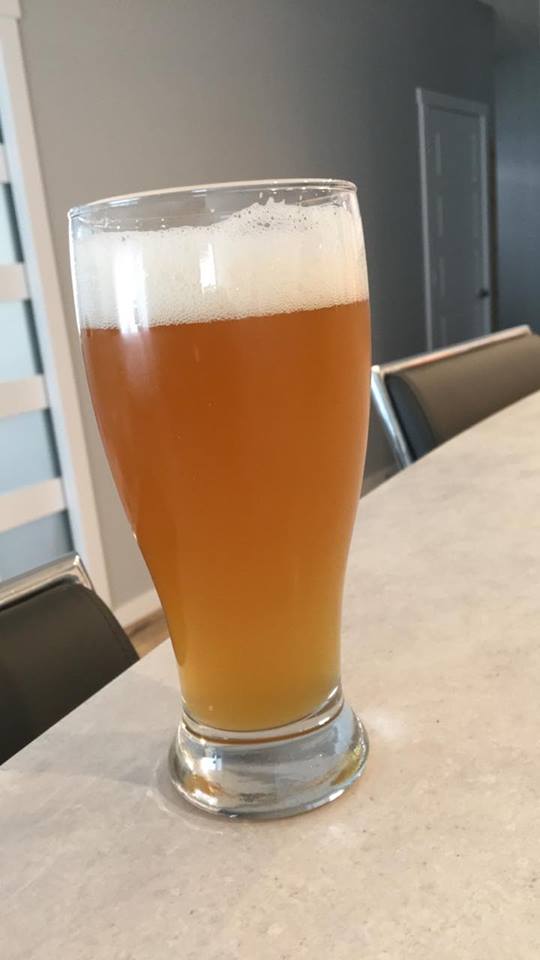Not that it matters a great deal, but I know people are always wondering about "what makes NEIPA's hazy?" Just thought I would post a rather interesting recent beer..... Basically, I wanted to make a version of this that was really more of a west coast/session american pale ale. So, I did the following....
Water:
175:50 Sulfate to Chloride
Grain Bill (1.048 OG):
40% 2 Row
40% Golden Promise
10% White Wheat
7% Corn Sugar
3% Carahell (10L)
Hops (35 IBU's from 30 minute and 5 minute additions):
23 IBU Centennial @ 30 min.
1/2 oz. each of Centennial/Galaxy/Citra at 5 minutes
1/2 oz. each of Centennial/Galaxy/Citra after chilling wort started
1/2 oz. each of Centennial/Galaxy/Citra Dry hop - Day 6 or 7.... after fermentation basically finished.
Yeast:
1968.... .this yeast drops out like a rock and leaves crystal clear beers in a relatively short period of time.
Used Irish Moss
Cold Crashed before transferring to serving Keg.
Brewed it a month ago....... Been sitting in kegerator undisturbed for past couple weeks. And here it is...... suspiciously looking like a NE IPA.
So..... things that people often attribute haziness to were not done in this beer:
* Used a VERY flocculent yeast
* No flaked grains
* No dry hop early in fermentation
* Cold Crashed
* Used Irish Moss
What remained the same???
* Fairly high proportion of oily hops late/whirlpool/Dry hop (Citra/Galaxy)
* Lower temp whirlpool addition
* ..... That is about it.
I don't really care that much about the haziness of these beers..... but, I thought it was interesting that the beer came out like this in spite of the absence of a lot of the "necessary" NE IPA ingredients/strategies....
Oh - by the way - the beer turned out great. Definitely a drinker.
View attachment 574326



































![Craft A Brew - Safale S-04 Dry Yeast - Fermentis - English Ale Dry Yeast - For English and American Ales and Hard Apple Ciders - Ingredients for Home Brewing - Beer Making Supplies - [1 Pack]](https://m.media-amazon.com/images/I/41fVGNh6JfL._SL500_.jpg)























